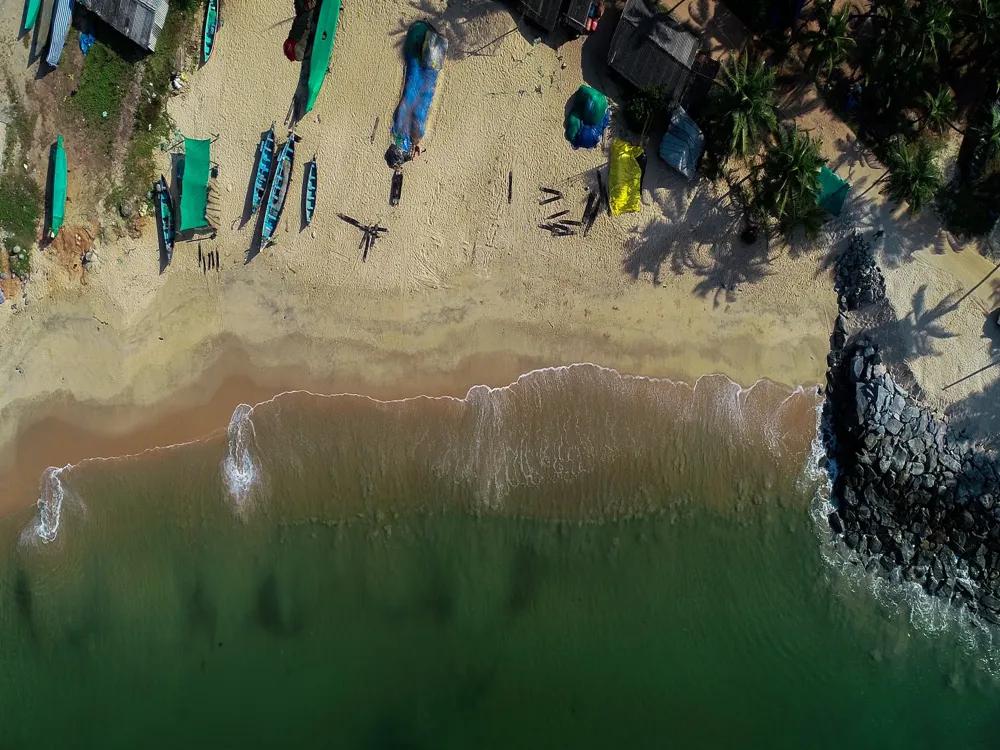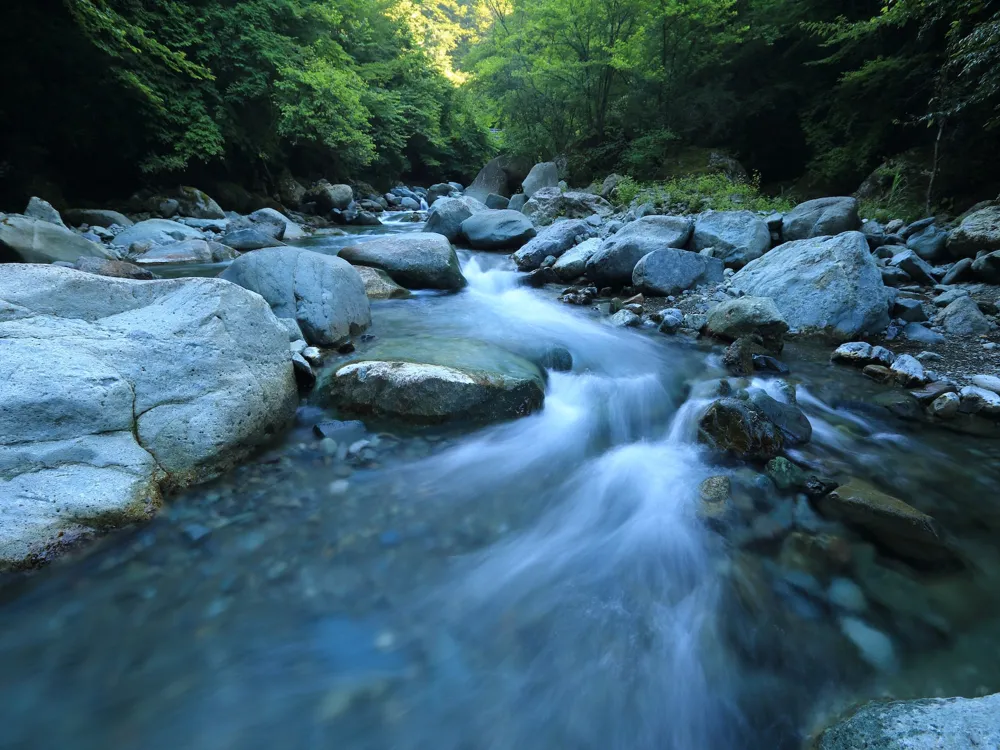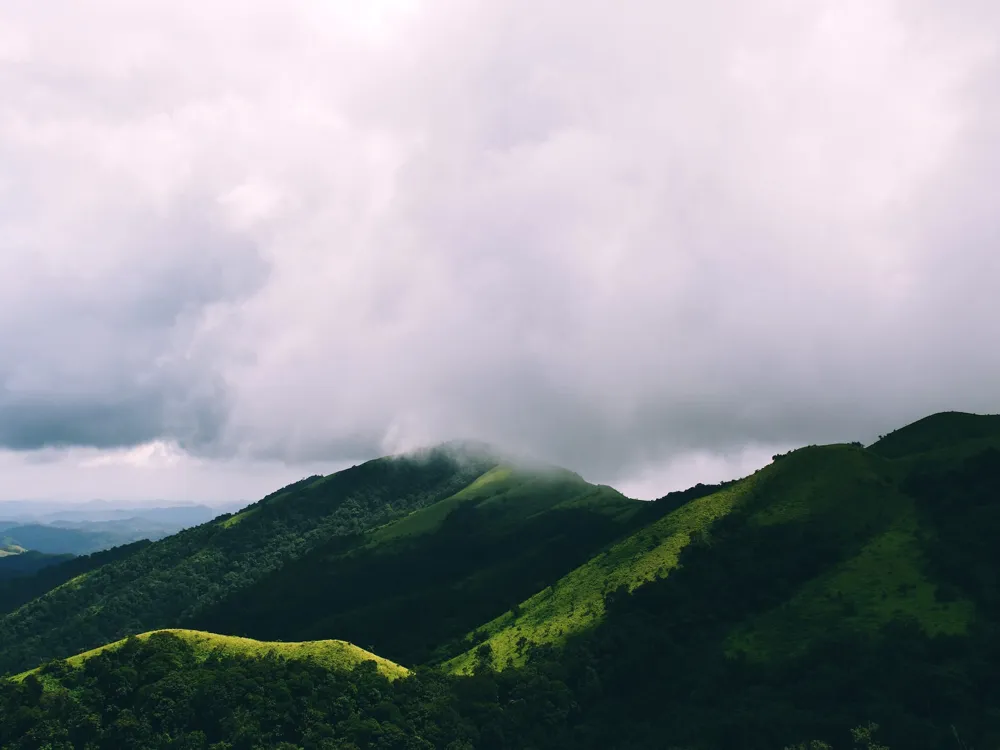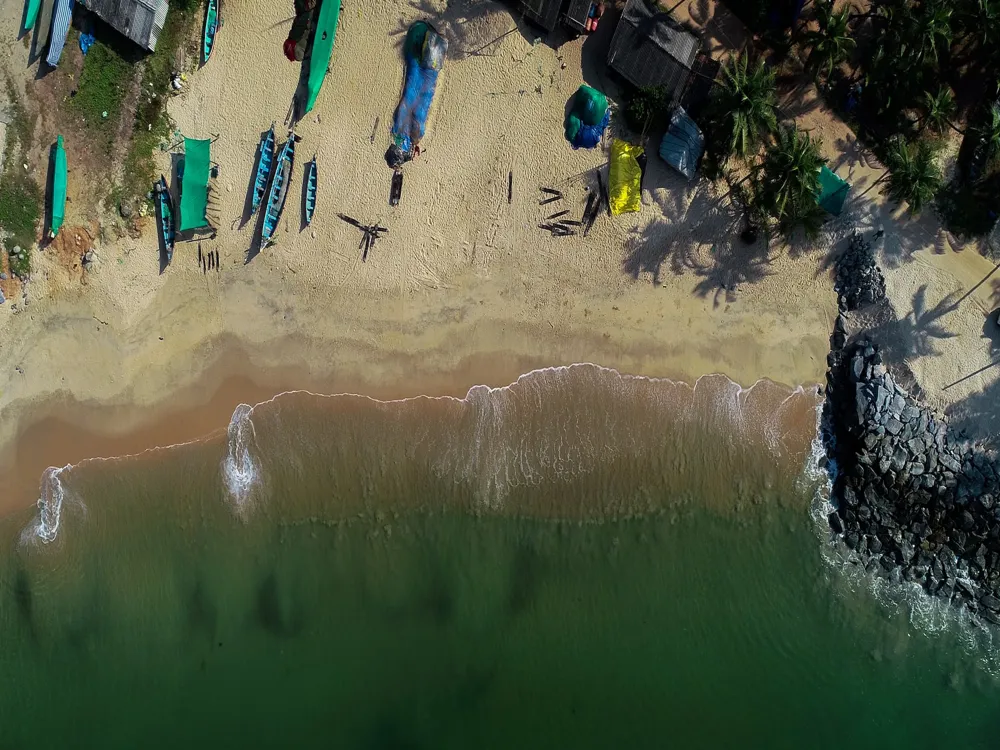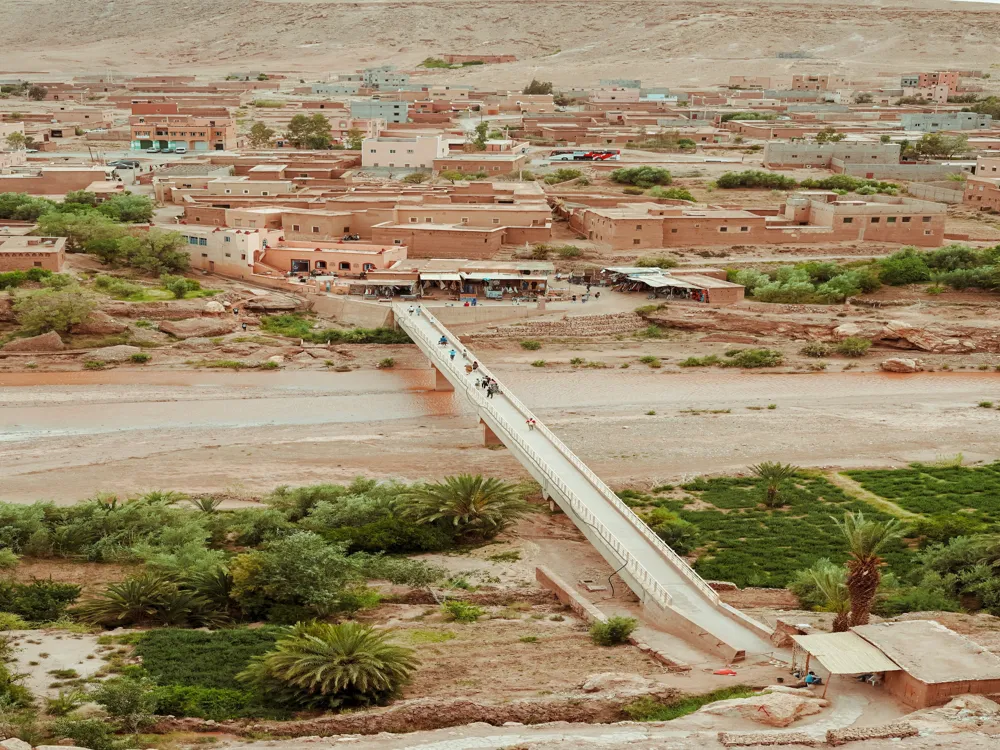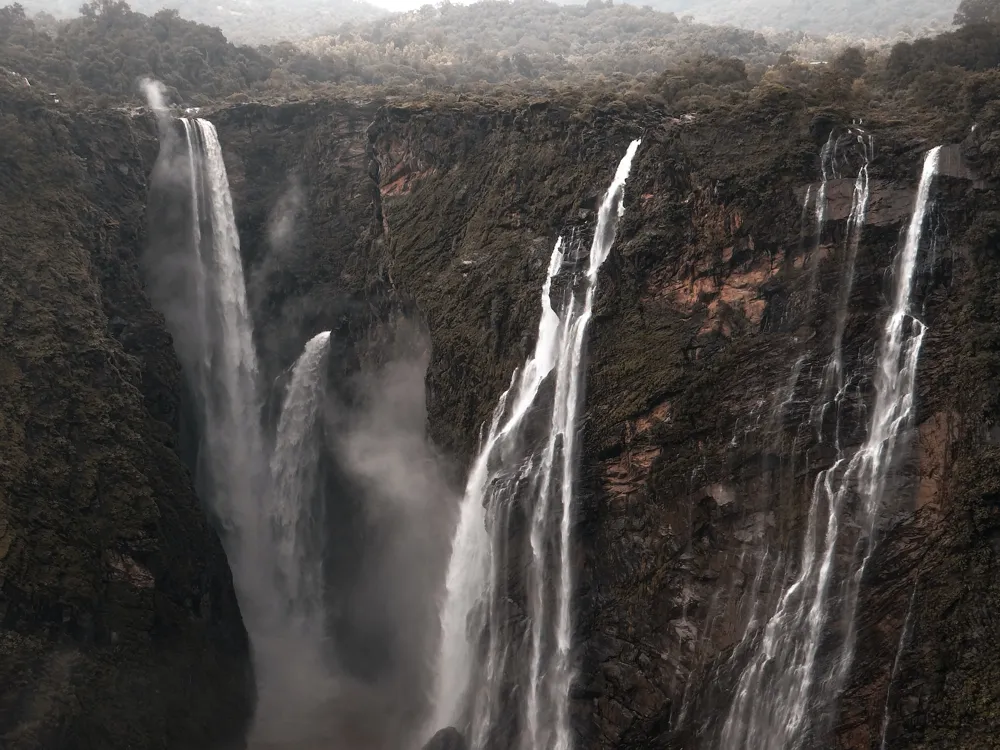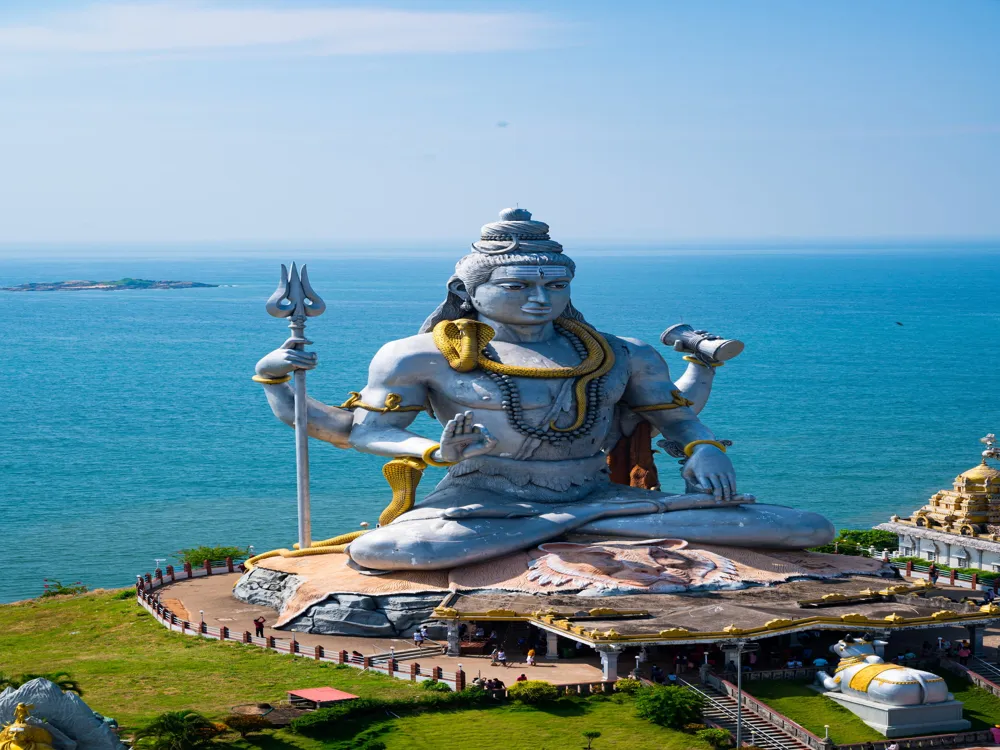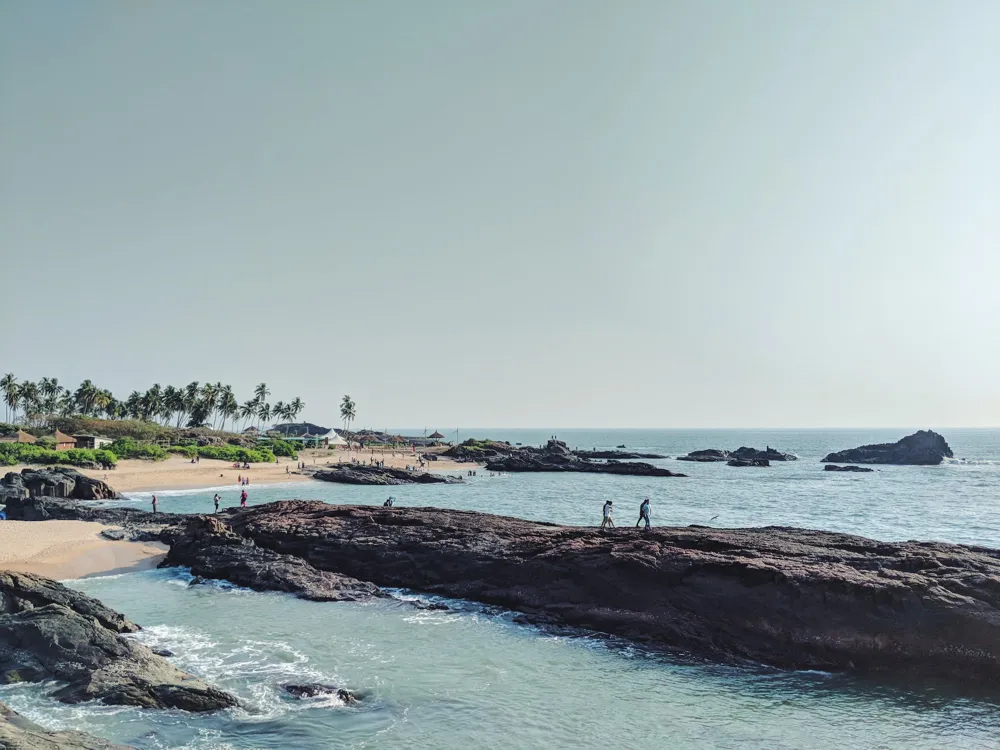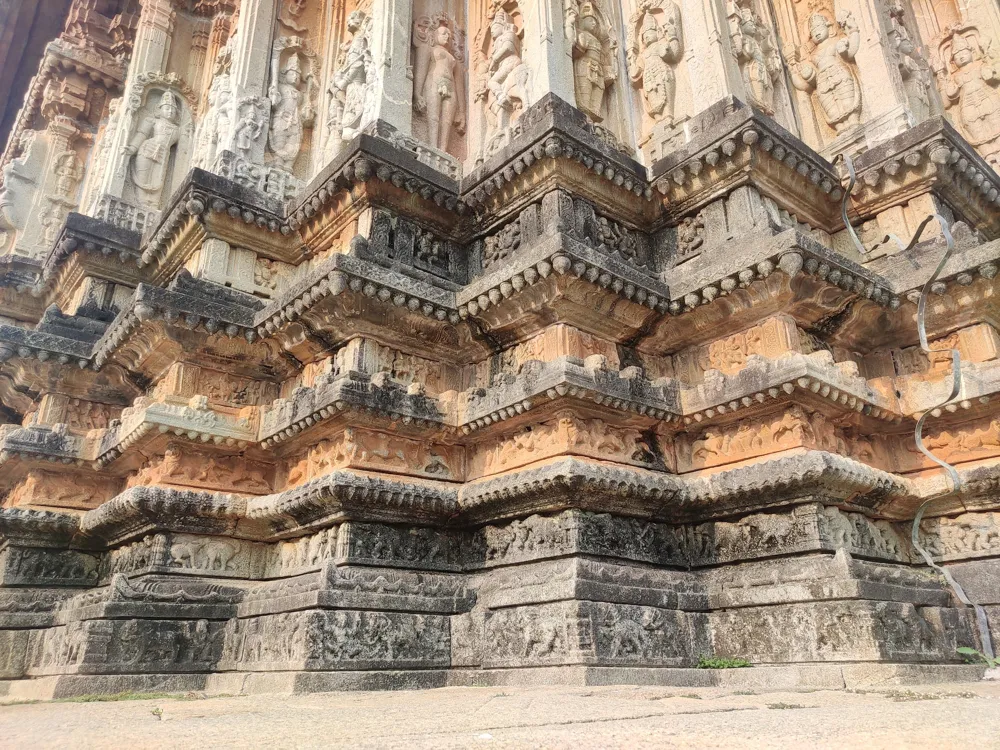Nestled in the heart of the Western Ghats in Karnataka, India, Kodachadri is a mountain peak exuding natural beauty and a rich historical legacy. This enchanting location, situated in the Shimoga district, is renowned for its lush green landscapes and mesmerizing views. Kodachadri forms a picturesque background to the famous Mookambika Temple in Kollur and is a popular destination for trekkers, nature lovers, and spiritual seekers. The peak, rising to a height of about 1343 meters above sea level, is enveloped in dense forests, adding to its mystic allure. The history of Kodachadri is steeped in mythology and local folklore. It is believed to be a place of spiritual significance, mentioned in various ancient texts. According to Hindu mythology, it is said to be the abode of the goddess Mookambika, who is worshipped at the Mookambika Temple. The region around Kodachadri is dotted with numerous temples, each narrating its own unique story, thereby making it a hub for cultural and spiritual tourism. The biodiversity in Kodachadri is rich and diverse, making it a hotspot for ecotourism. The hills are home to a variety of flora and fauna, including several endangered and endemic species. The dense forests host a range of wildlife such as leopards, Malabar langurs, and numerous bird species. The region's unique geographical features, like the Hidlumane Falls, add to its enchanting beauty. The serene environment, coupled with the cool climate, makes Kodachadri an ideal retreat for those looking to escape the hustle and bustle of city life. Adventure enthusiasts find Kodachadri a haven, with opportunities for trekking, camping, and mountain biking. The trek to the peak offers breathtaking views of the Western Ghats and the Arabian Sea. The trekking trails range from moderate to challenging, attracting both novice and experienced trekkers. The peak provides a panoramic view of the lush green hills blanketed in mist, a sight that leaves visitors spellbound. The cultural heritage of Kodachadri is equally fascinating. The region has been a witness to many historical events and has been an integral part of the local folklore. The architecture of the temples and the ancient structures in the vicinity reflect the rich cultural and historical legacy of the region. Festivals and rituals held in these temples draw scores of devotees, highlighting the spiritual significance of Kodachadri. In conclusion, Kodachadri is a blend of natural beauty, rich biodiversity, cultural heritage, and spiritual significance. This majestic peak is not just a trekker's paradise but also a place of solace for those seeking spiritual enlightenment. Its untouched beauty and tranquil surroundings make it one of the must-visit destinations in Karnataka. The architecture in and around Kodachadri is a testament to the region's rich cultural and historical heritage. The area is dotted with numerous ancient temples, each showcasing unique architectural styles that reflect the skills and artistry of the eras they were built in. These structures are not only places of worship but also monuments that preserve the legacy of a bygone era. The most significant architectural marvel in the vicinity of Kodachadri is the Mookambika Temple in Kollur. This temple, dedicated to the goddess Mookambika, stands as a fine example of Dravidian architecture. The temple's history dates back over a thousand years, and it is believed to have been founded by Parashurama, a sage in Hindu mythology. The intricate carvings, detailed sculptures, and the overall design of the temple are reflective of the craftsmanship prevalent during its construction. The temple complex includes a 'Sri Chakra', which is considered a rare and sacred feature. The main deity of the temple is said to be self-manifested (Swayambhu), adding to the temple's mystical aura. The temple also features a gold-plated crest and copper roofs, symbolizing the architectural grandeur of ancient South Indian temples. Apart from the Mookambika Temple, other architectural sites in Kodachadri are of significant interest. The Chitramoola Cave, located near the peak, is associated with the sage Adi Shankaracharya. It's said that he meditated in this cave, which is now a place of spiritual significance. The path to the cave is adorned with natural beauty and offers a glimpse into the ascetic life. Another noteworthy structure is the Sarvajna Peetha, a small stone structure at the peak of Kodachadri. This place is believed to be where Adi Shankaracharya meditated and attained enlightenment. The simplicity of the structure, juxtaposed with its profound spiritual significance, adds a unique dimension to the architectural landscape of Kodachadri. The local homes and settlements around Kodachadri also reflect traditional architectural styles. These structures, made from local materials like wood and laterite, blend seamlessly with the natural surroundings. They are a reflection of the sustainable living practices of the local communities, harmoniously coexisting with nature. In essence, the architecture of Kodachadri is a blend of spiritual, cultural, and historical elements. The ancient temples, caves, and local dwellings not only serve as architectural marvels but also as custodians of the rich heritage and traditions of the region. The ideal time to visit Kodachadri is from September to January when the weather is pleasant and conducive for trekking and sightseeing. The monsoon season, although beautiful, can be challenging due to heavy rainfall and slippery paths. Trekking to Kodachadri requires good physical fitness. Carry sufficient water, wear comfortable trekking shoes, and dress in layers to adapt to the changing weather. Hiring a local guide can enhance the trekking experience and ensure safety. There are several accommodation options available near Kodachadri, ranging from budget homestays to luxury resorts. Booking in advance is recommended, especially during peak season. Visitors are encouraged to respect the local culture and traditions. It's important to maintain cleanliness and avoid littering to preserve the natural beauty of Kodachadri. Kodachadri is well-connected by road and can be reached from major cities like Bangalore, Mangalore, and Mysore. Read More:Overview of Kodachadri, Maravanthe, Karnataka
Architecture of Kodachadri
Tips When Visiting Kodachadri
Best Time to Visit
Preparation for Trekking
Accommodation
Respecting Local Culture and Nature
How To Reach Kodachadri
Kodachadri
Maravanthe
Karnataka
NaN onwards
View maravanthe Packages
Weather :
Tags : Trekking & Hiking
Trek Duration : 1-2 days depending on the route
Difficulty Level : Easy to Moderate
Planning a Trip? Ask Your Question
Maravanthe Travel Packages
View All Packages For Maravanthe
Top Hotel Collections for Maravanthe

Private Pool

Luxury Hotels

5-Star Hotels

Pet Friendly
Top Hotels Near Maravanthe
Other Top Ranking Places In Maravanthe
View All Places To Visit In maravanthe
View maravanthe Packages
Weather :
Tags : Trekking & Hiking
Trek Duration : 1-2 days depending on the route
Difficulty Level : Easy to Moderate
Planning a Trip? Ask Your Question
Maravanthe Travel Packages
View All Packages For Maravanthe
Top Hotel Collections for Maravanthe

Private Pool

Luxury Hotels

5-Star Hotels

Pet Friendly







